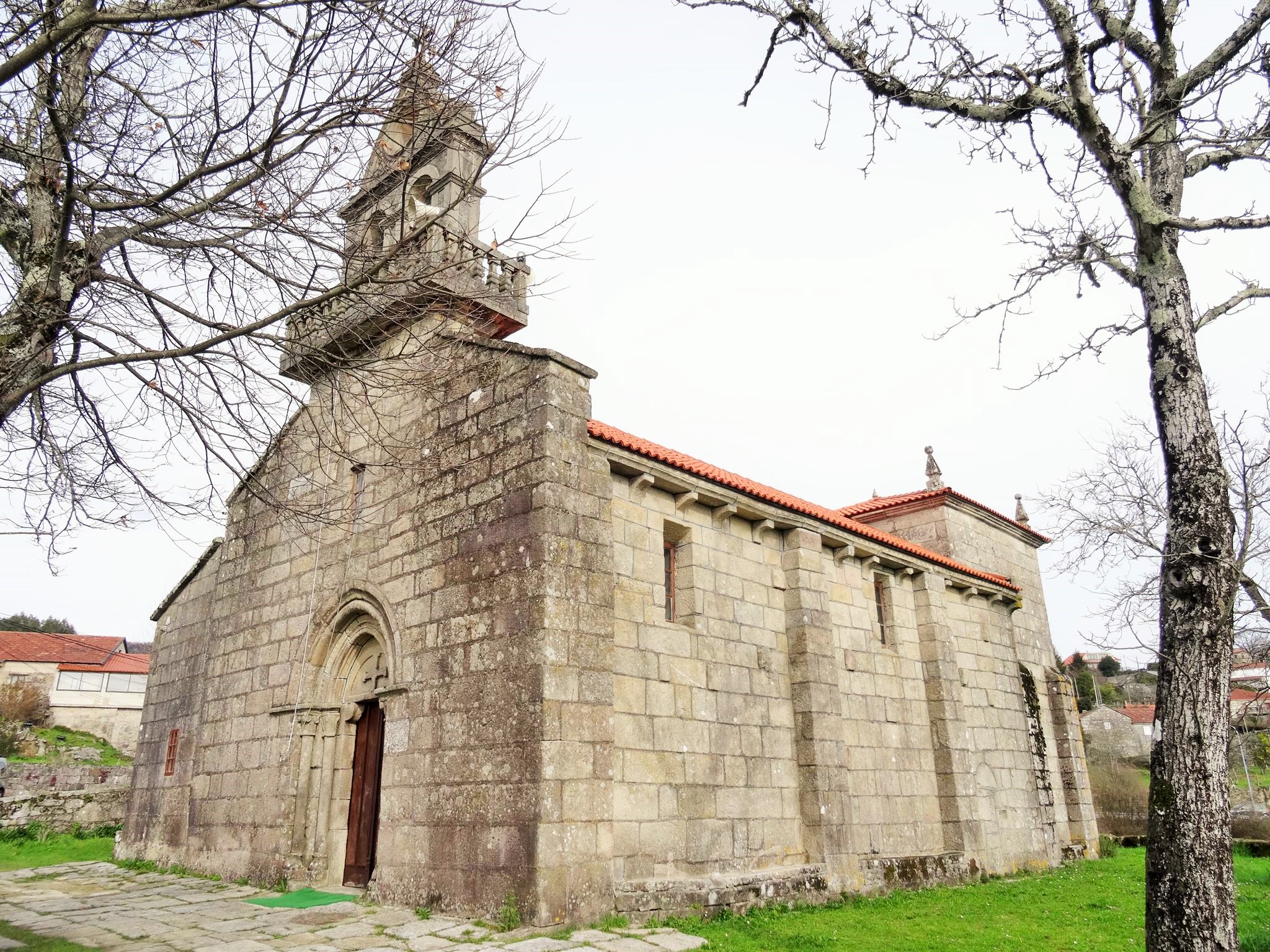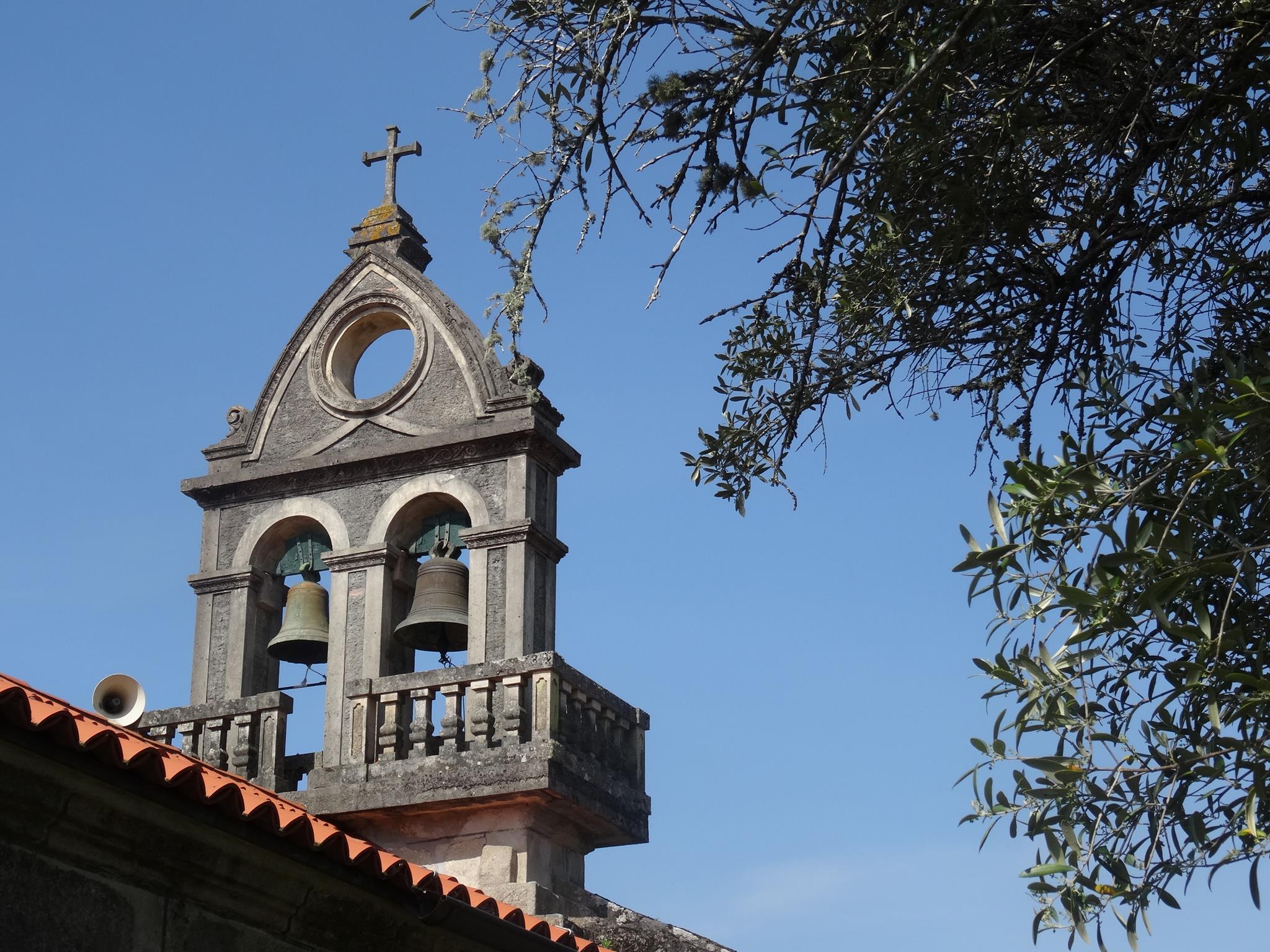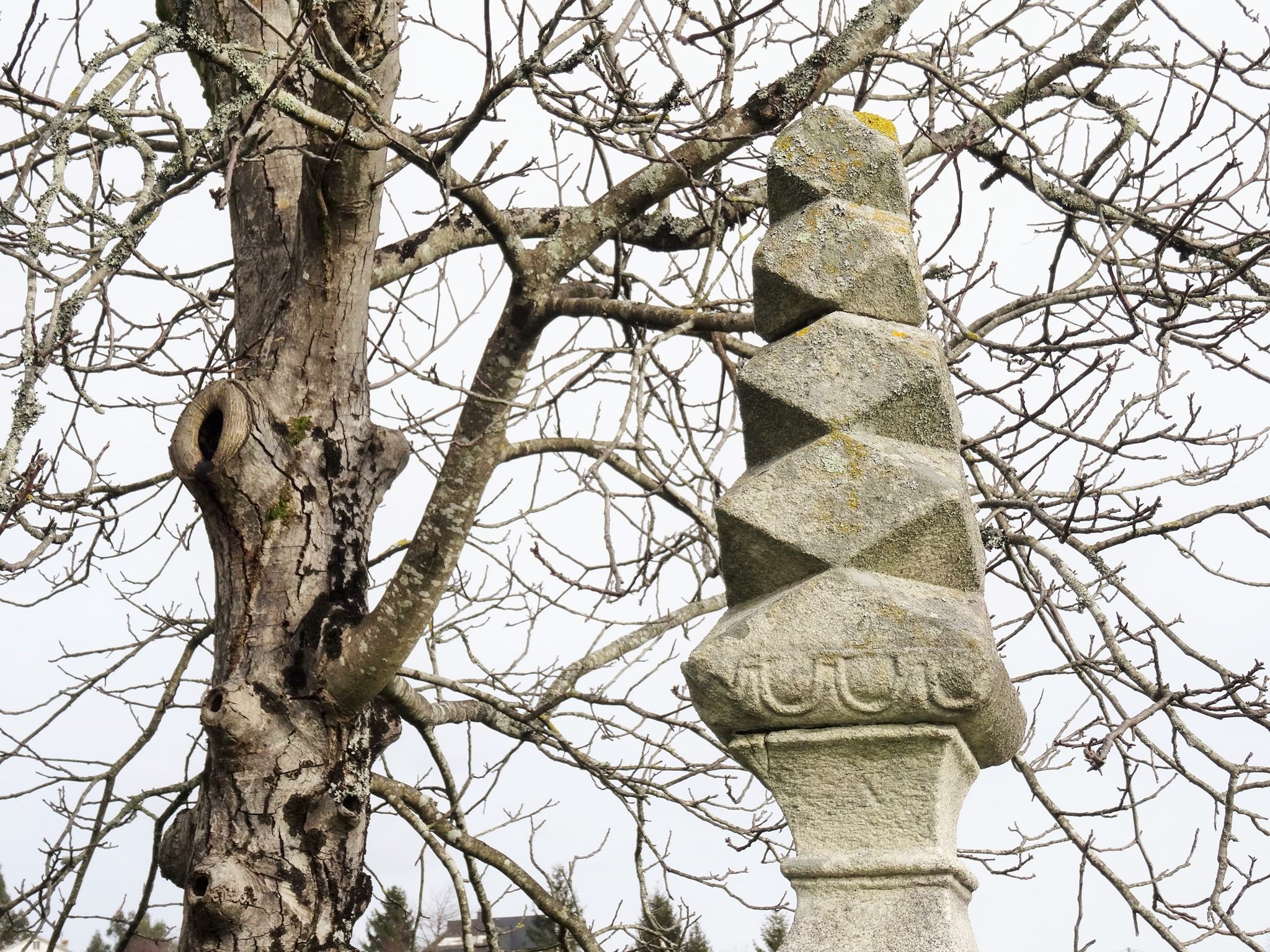Church of St Mary of Tourón
Temple of Romanesque origin whose presbytery has a triumphal arch carved in sharp edge, with a pointed guideline, and rests on two columns with the bases hidden under the paved surface. The nave retains a medieval door with a semicircular arch and lintel on its outer face, now occupied by the sacristy. Symmetrically along its north wall there is another door that is the same, but blind, as is the internal spill pocket of the apse that today hosts the Baroque main altarpiece. The walls of the nave are entirely Romanesque, although the roof was modified, as were the windows and the Baroque chapel open on its north wall. The Baroque baptistery was also added during the Modern Age. In the year 1727, the second one appears in an inscription of the stone walls, where the image of the praying Virgin that appears on the facade, donated by the abbot Clemente Figueroa, was carved. The most valuable element of the Romanesque temple is the western facade, which has two lightly pointed archivolts on its door, with a stone on the outside and a half-round shaft on the inside; Bevel decorated with zigzag stroke and smooth half-round chamfer. In the south facade you can see 11 corbels of nacelle profile, 2 old loopholes, which are now rectangular, and two thick buttresses in the area of the presbytery. Some years ago a Romanesque baptismal font was found, which was reused as a fountain in the atrium.




